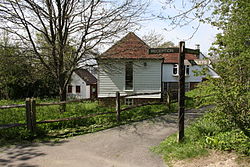 Woods Mill headquarters of the SWT in 2009 | |
| Formation | 1961 |
|---|---|
| Headquarters | Woods Mill |
| Location |
|
| Membership | 38,000 |
| Website | Sussex Wildlife Trust |
The Sussex Wildlife Trust (SWT) is a conservation charity which aims to protect natural life in Sussex. It was founded in 1961 and is one of 46 wildlife trusts across the UK and the Isle of Man and Alderney. As of 2024, it had 38,000 members and manages 2,000 hectares (5,000 acres) of land for nature. [1] It is a registered charity [2] and in the year to 31 March 2019 it had an income of £5.7 million and expenditure of £4 million, resulting in net income of £1.7 million. [3]
Contents
The SWT manages twenty-six nature reserves in the county. [a] Nineteen are Sites of Special Scientific Interest, one is a national nature reserve, eleven are local nature reserves, eight are Special Areas of Conservation, three are Special Protection Areas, three are Ramsar sites and seven are Nature Conservation Review sites. Its headquarters at Woods Mill, south of Henfield, is also a nature reserve with a lake, woodland and meadows. [5]
The historic county of Sussex is divided into the administrative counties of East Sussex and West Sussex. The South Downs stretches across the county from west to east. This area is chalk and to the north is the Weald, which is composed of heavy clays and sand. The coast has a succession of holiday towns such as Brighton, Eastbourne, Bognor Regis and Worthing. [6]
























